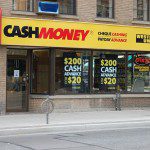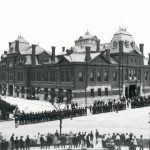![https://commons.wikimedia.org/wiki/File%3AIndiana_Dunes_National_Lakeshore_(8741872906).jpg; By NOAA Great Lakes Environmental Research Laboratory (3049) [CC BY-SA 2.0 (http://creativecommons.org/licenses/by-sa/2.0)], via Wikimedia Commons](https://wp-media.patheos.com/blogs/sites/533/2016/10/Indiana_Dunes_National_Lakeshore_8741872906.jpg)
You know, the Indiana Dunes National Lakeshore is really not the best part of the Lake Michigan shoreline — that’s along Michigan’s “west coast” (as they like to market themselves). Instead, the National Lakeshore exists where is does because of the history of its creation, long after much of the shoreline was used for industrial purposes, or for vacation or year-round homes. It was cobbled together from purchases, and much of it isn’t even lakeshore, but natural areas slightly inland, and it’s very disconnected instead of being one or even several contiguous areas. And it’s comparatively new – established in 1966, whereas the Indiana Dunes State Park was founded in 1925. (See the relevant wikipedia stories, one on the history as well as one with images showing the cobbled-together nature of the National Lakeshore — and, yes, that’s a steel mill in the middle, as well as a nuclear power plant.)
But that’s not stopping U.S. Rep. Pete Visclosky of Merrillville from proposing designating the lakeshore as a national park.
The reason? Money. As the Tribune reports,
The designation would create the 60th national park in the nation and the first in Indiana, according to a press release from Visclosky’s office. The intent is to capture all the tourism benefits and recognition of being a national park.
The measure was introduced with the support of the entire Indiana delegation to the House of Representatives. It is pending in the House Committee on Natural Resources. . . .
The lakeshore attracts an average of 2 million visitors a year, making it the No. 1 attraction in the state, said Lorelei Weimer, executive director of Indiana Dunes Tourism, adding 60 percent of visitors are from out of state.
The lakeshore accounts for $76 million in new revenue to the region each year, as well as 947 jobs and $9.9 million in labor income.
“We strongly anticipate the number of visitors and the national impact will increase if the new name of Indiana Dunes National Park is adopted,” she said. “People love to visit our national parks and many travelers include visiting all of the national parks on their bucket list.”
Is this the right thing to do? After all, there’s virtually no cost — just that of reprinting the various brochures and signs.
But is there really no cost?
A national park designation communicates something — not just that the location is a part of the system of natural areas and heritage sites managed by the federal government, but that it is one of the most majestic, awe-inspiring natural areas in the nation. When you think “national park,” you expect it to be something grand, at a level much higher than just your run-of-the-mill state park; you expect far more than hiking trails and a visitor’s center. It’s a brand.
And by giving the name “national park” to more and more sites, you really dilute the brand. How many more additions to the “national park” list does it take before tourists do not see it as something special, but are skeptical and study TripAdvisor before turning off the highway, in the same way as you would any other tourist attraction?
Image: https://commons.wikimedia.org/wiki/File%3AIndiana_Dunes_National_Lakeshore_(8741872906).jpg; By NOAA Great Lakes Environmental Research Laboratory (3049) [CC BY-SA 2.0 (http://creativecommons.org/licenses/by-sa/2.0)], via Wikimedia Commons













